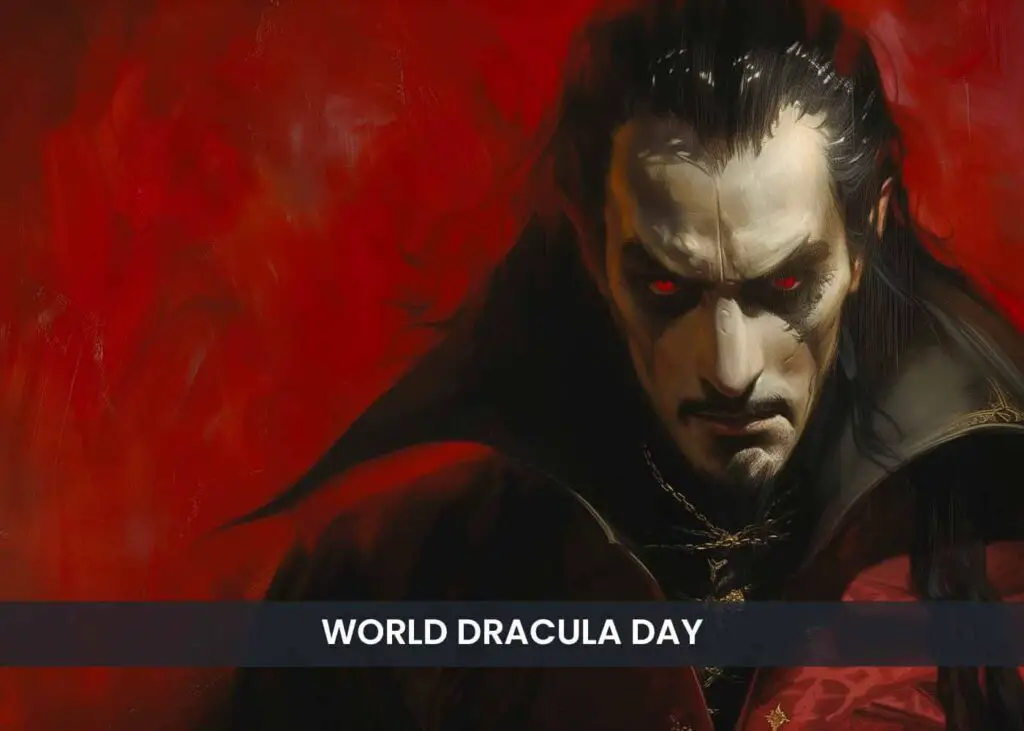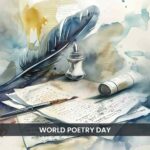
World Dracula Day: Unveiling the History and Global Celebrations
World Dracula Day is observed annually on May 26th to honor the publication of Bram Stoker‘s novel Dracula. Published in 1897, this day celebrates the impact of the classic Gothic novel not only on literature but also on modern vampire mythology and popular culture. Stoker’s Dracula is a pivotal work that defined the horror genre and introduced one of literature’s most enduring characters – Count Dracula, a Transylvanian nobleman and the epitome of the vampire in fiction.
The celebration of World Dracula Day brings together enthusiasts of the supernatural, horror fans, and literary scholars alike. It provides an opportunity to examine the legacy and influence of the novel, which extends far beyond the boundaries of its pages. The character of Count Dracula has transcended literature, inspiring countless adaptations including films, television series, and plays, as well as being a popular figure during Halloween.
On this day, various events and activities take place, including academic conferences, Dracula-themed parties, and even tours to Transylvania, the region in Romania associated with the legendary character. The book’s importance is highlighted through discussions about its historical context, Stoker’s influences when writing, and the subsequent impact on how vampires are represented in media. World Dracula Day serves as a reminder of the lasting significance of Stoker’s creation, which continues to captivate audiences worldwide.
1. The Origin and Significance of World Dracula Day
World Dracula Day is observed annually on May 26, marking the anniversary of the publication of Bram Stoker’s seminal gothic horror novel, Dracula. This day celebrates the novel’s influence on vampire lore and its lasting impact on popular culture.
Bram Stoker’s Magnum Opus
Bram Stoker, an Irish author, introduced the world to his iconic character Count Dracula through the book published on May 26th, 1897. The novel, presented in a series of letters, diary entries, and other narrative forms, recounts the story of Dracula’s attempt to move from Transylvania to England with the intent of spreading the undead curse. It notably expanded the vampire mythos into the fabric of modern literature and culture. Published by Archibald Constable and Company in the UK, the novel underwent subsequent publishing in the United States by Doubleday & McClure in 1899, ensuring a broader readership.
- Publication Date: May 26, 1897
- Author: Bram Stoker
- Genre: Gothic Horror Novel
- UK Publisher: Archibald Constable and Company
- US Publisher: Doubleday & McClure
The book not only carved a niche for itself as a masterpiece of the gothic genre but also established Count Dracula as a character with lasting global appeal.
Commemoration on May 26
May 26 was chosen as World Dracula Day to honor the book’s publication date, and it serves both as a celebration of Stoker’s work and a general appreciation for the vampire genre that he helped to popularize. Fans of the novel and vampire aficionados around the world mark the day through various activities, from academic conferences to themed parties.
- Reasons for Commemoration:
- Anniversary of Publication
- Celebration of Gothic Horror and Vampire Fiction
This date invites both scholars and enthusiasts to reflect on the enduring significance of the novel and its profound influences, not only on horror writing but also on literature, film, and television. It offers an opportunity to appreciate Stoker’s craft and the rich legacy left by his most famous creation.
2. Dracula in Literature and Media
Dracula’s presence has permeated literature and media, leaving an indelible mark on the horror genre and inspiring numerous adaptations. This section analyses the Count’s literary significance, influence on horror, and various media interpretations.
Literary Analysis
Bram Stoker’s 1897 novel Dracula stands as a seminal work in gothic fiction, offering both a captivating story and a rich character study. Stoker’s creation, the eponymous Count Dracula, embodies the archetypal vampire with a combination of aristocratic charm and eldritch horror. The novel’s exploration of Victorian anxieties and themes contributes significantly to its enduring appeal within literature.
Dracula’s Influence on Horror Genre
Dracula has been instrumental in shaping the horror genre, particularly establishing vampires as iconic figures within this realm. The Count’s characteristics – a nocturnal predator with a thirst for blood – have become quintessential elements of vampire lore. This influence is evident in the proliferation of vampire-themed works that followed, many of which draw upon Stoker’s portrayal to evoke fear and fascination.
Adaptations across Various Media
| Medium | Notable Adaptations | Key Figures Involved |
|---|---|---|
| Film | Nosferatu (1922) | F. W. Murnau |
| Dracula (1958) | Christopher Lee | |
| Bram Stoker’s Dracula (1992) | Gary Oldman | |
| Television | Dracula (2013–2014) | Jonathan Rhys Meyers |
The character of Dracula has been adapted across various media, from the silent film era’s Nosferatu – an unauthorized yet highly influential interpretation – to lavish productions such as Gary Oldman’s portrayal in Bram Stoker’s Dracula. Christopher Lee’s performance in the Hammer Film series of the 1950s through 1970s solidified Dracula as a pop culture icon. Television adaptations have also reimagined Dracula for new audiences, highlighting the character’s versatility and timeless appeal.
3. Cultural and Historical Context
The cultural and historical roots of World Dracula Day trace back to Eastern European vampire lore and the legendary character’s ties to locations like Transylvania and Whitby. These elements are ingrained in the mythos surrounding the infamous Count Dracula.
Vampire Lore in Eastern Europe
Vampire myths have flourished in Eastern Europe, with each culture contributing to a diverse tapestry of undead folklore. Romanian history, in particular, is rich with tales of vampires, creatures that feed on the life force of the living. These beings are believed to have originated from various sources, including cultural superstitions and misunderstood medical conditions.
Dracula’s Connection to Transylvania
Transylvania is often recognized as the homeland of Count Dracula, a fictional vampire from Bram Stoker’s 1897 novel. The character was inspired by Prince Vlad III of Wallachia, known as Vlad the Impaler, with Stoker borrowing from the prince’s reputation for cruelty to create his iconic antagonist. The association with Transylvania, despite being a backdrop rather than Vlad III’s central domain, has entrenched the region in vampire mythology.
- Location: Transylvania, now a central region of Romania
- Historical figure: Prince Vlad III
- Fictional representation: Count Dracula, a vampire
Whitby’s Role in Dracula
Whitby, a seaside town in England, significantly influences Stoker’s novel. The Whitby Dracula Society 1897 commemorates the town’s connection to the story, where Count Dracula first arrives in England. Whitby’s mysterious and atmospheric Gothic architecture, including the ruins of Whitby Abbey, perfectly frames the otherworldly and harrowing tale of the vampire.
- Key location: Whitby Abbey
- Cultural impact: Birthplace of England’s Dracula narrative
- Establishment: The Whitby Dracula Society 1897
By intertwining Eastern European folklore with historical characters and English gothic settings, the myth of Dracula has evolved to have a profound cultural impact reflected in the commemoration of World Dracula Day.
4. World Dracula Day Celebrations
World Dracula Day is observed annually on May 26th, commemorating the publication of Bram Stoker’s novel in 1897. This day has sparked a variety of celebrations worldwide that honor the famous Gothic horror character, Count Dracula, through events steeped in the rich essence of the vampire mythos.
Annual Events and Parties
The Whitby Dracula Society 1897 plays a pivotal role in orchestrating themed festivities. This society, based in the town associated with several key scenes from Stoker’s novel, schedules an array of events that include:
- Gothic Balls: Lavish celebrations featuring individuals adorned in period attire, often including capes and other emblems associated with Count Dracula.
- Dramatic Readings: Staged in historic venues, participants enjoy passages from Stoker’s work or related vampire literature.
- Horror Film Screenings: Showcases of classic and contemporary films that trace their lineage back to Count Dracula’s enduring legacy.
- Art Exhibits: Displays of vampire-themed artwork ranging from professional pieces to amateur submissions.
Additionally, themed parties take place across the globe, resembling the atmospheric revelry of Halloween, with attendees in costume enjoying the chilling and convivial ambiance.
Global Influence and Legacy
Count Dracula’s impact extends far beyond Transylvania, influencing various aspects of culture worldwide:
- Educational Seminars: Lectures and discussions about the historical impact of vampire folklore on modern media and the genre of Gothic horror.
- Literary Celebrations: Book clubs and libraries often organize vampire-themed readings and discussions to shed light on the eternal appeal of characters like Dracula.
- Vampire Tourism: Tours in Transylvania and other sites connected to vampire history experience heightened interest, spotlighting local lore and legend.
Communities, horror enthusiasts, and literary fans use World Dracula Day to celebrate a character that has become a symbol of one of literature’s most enduring genres.




